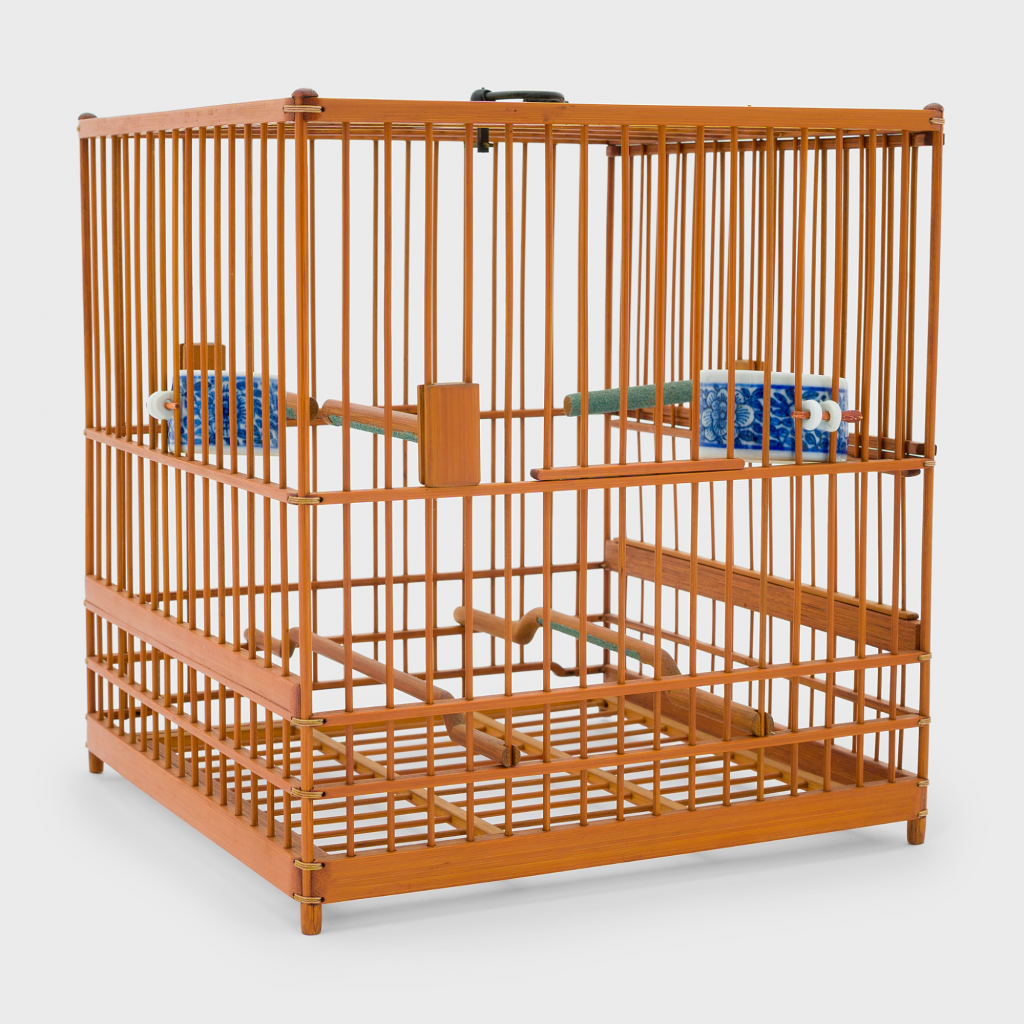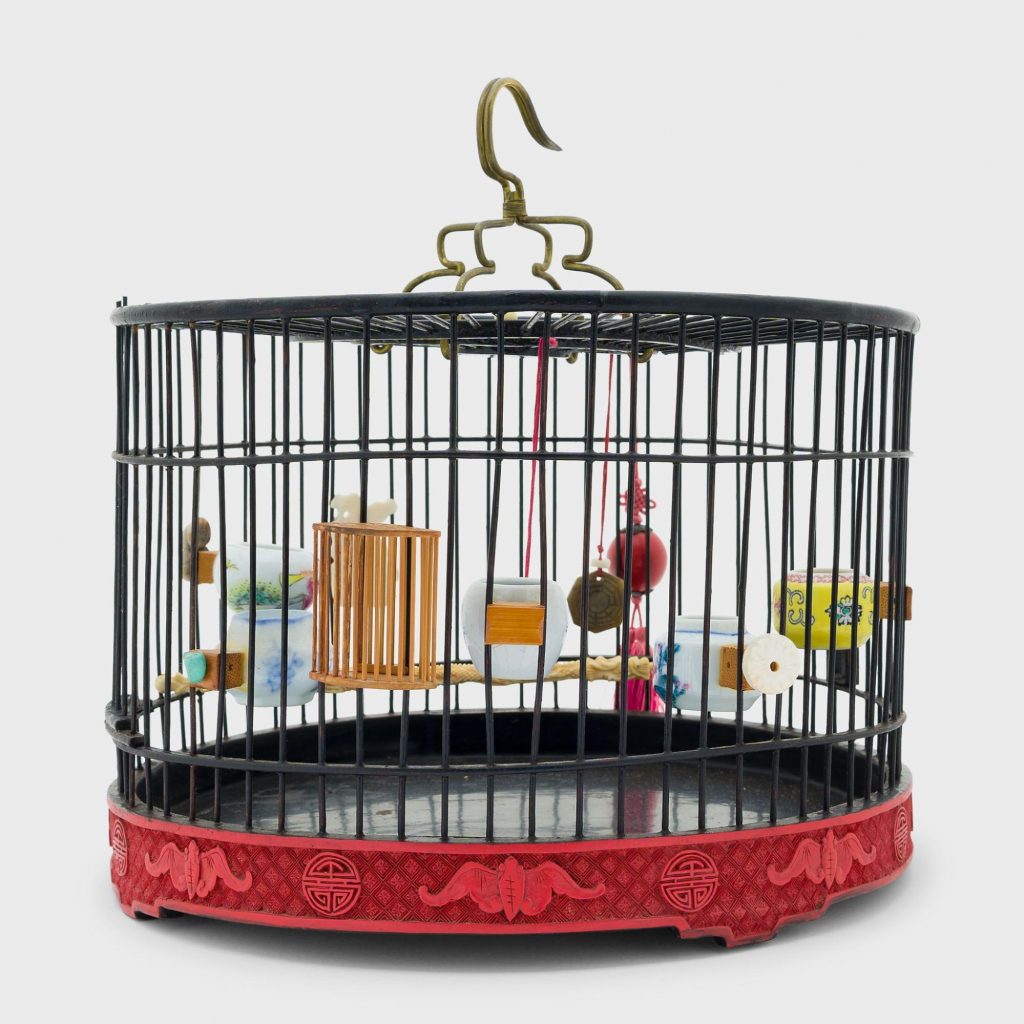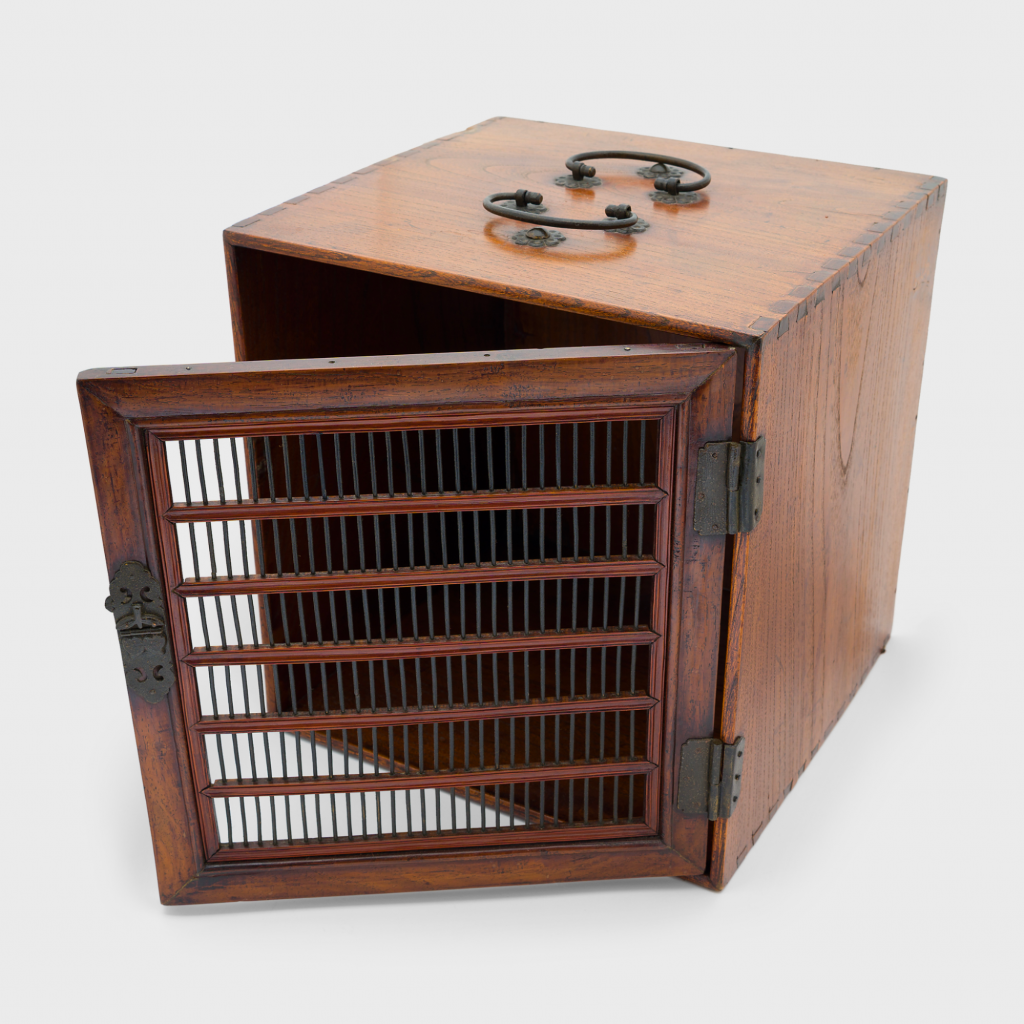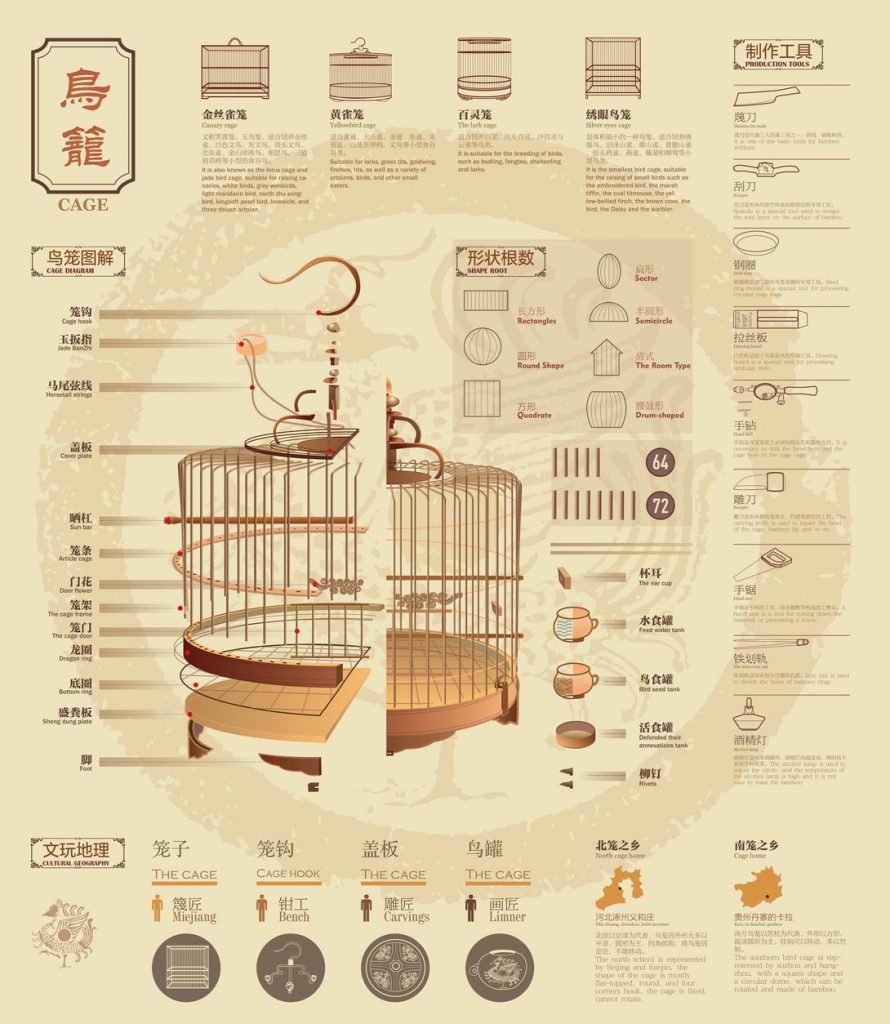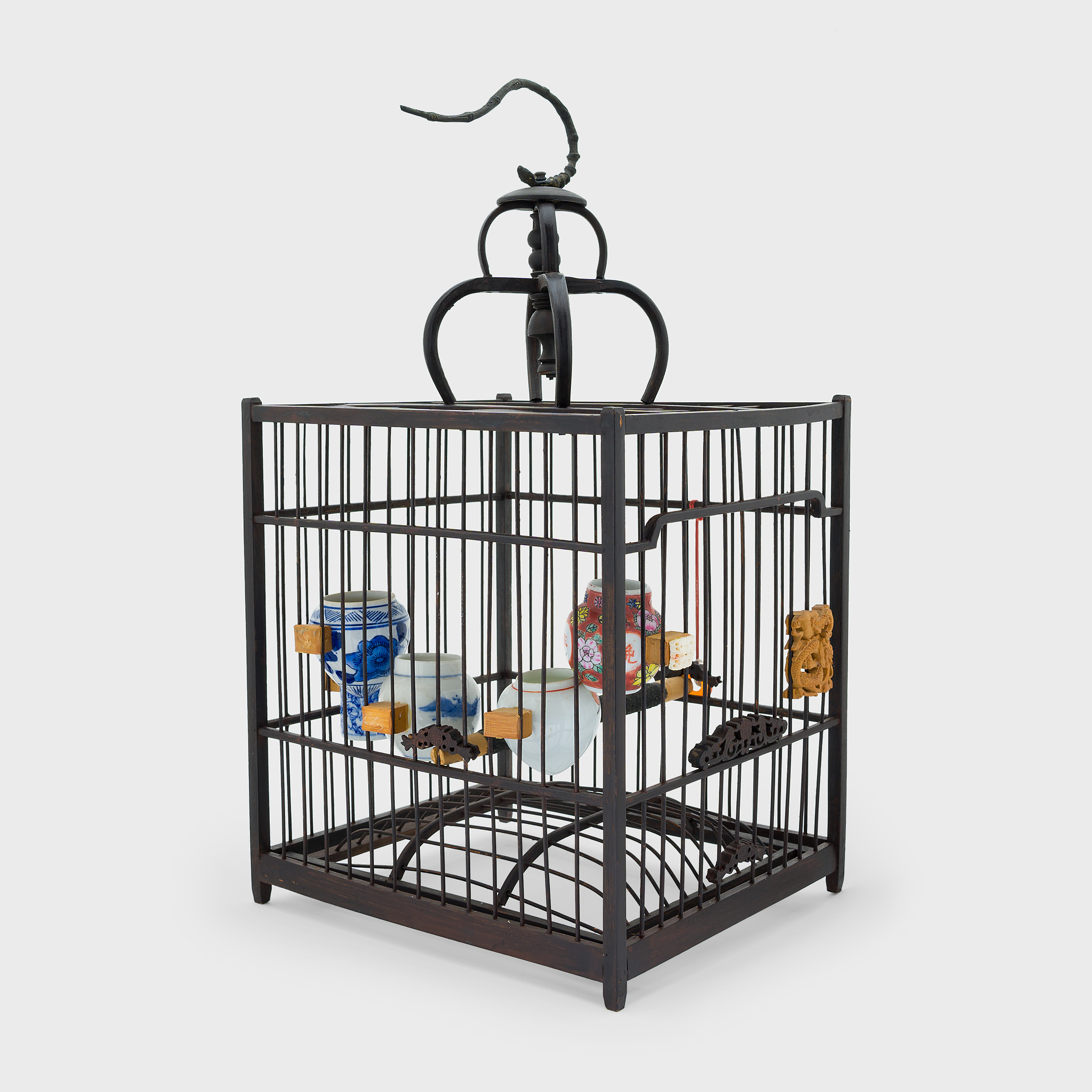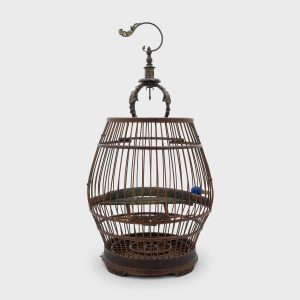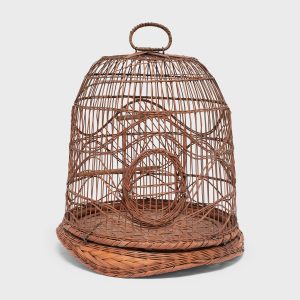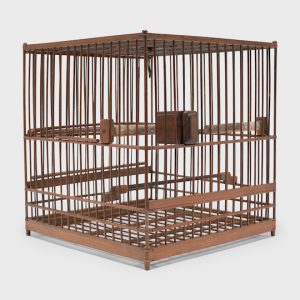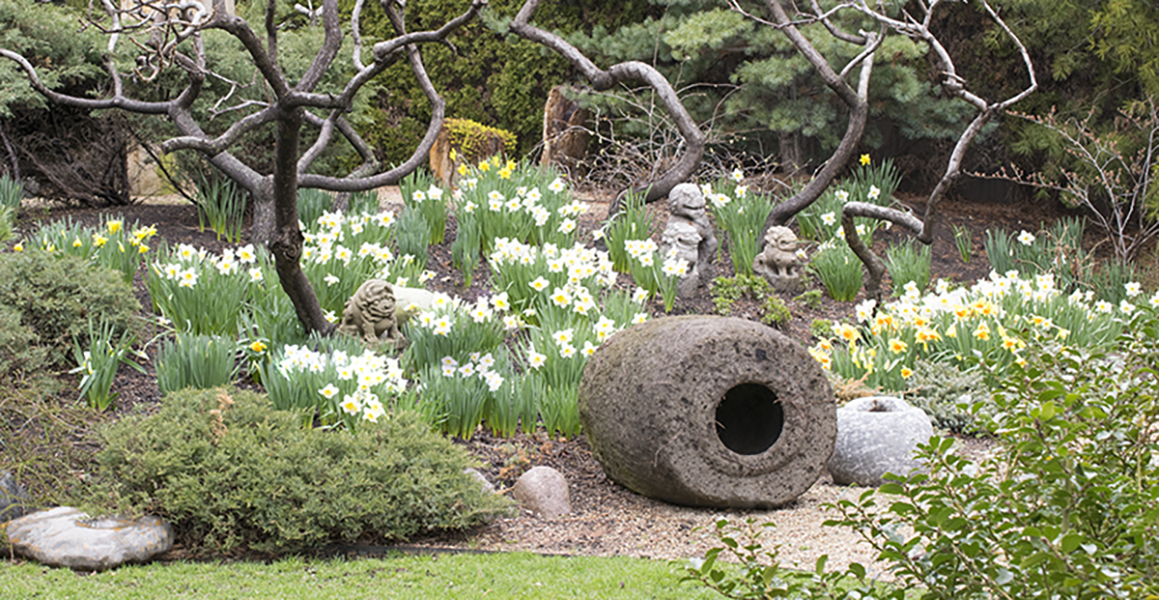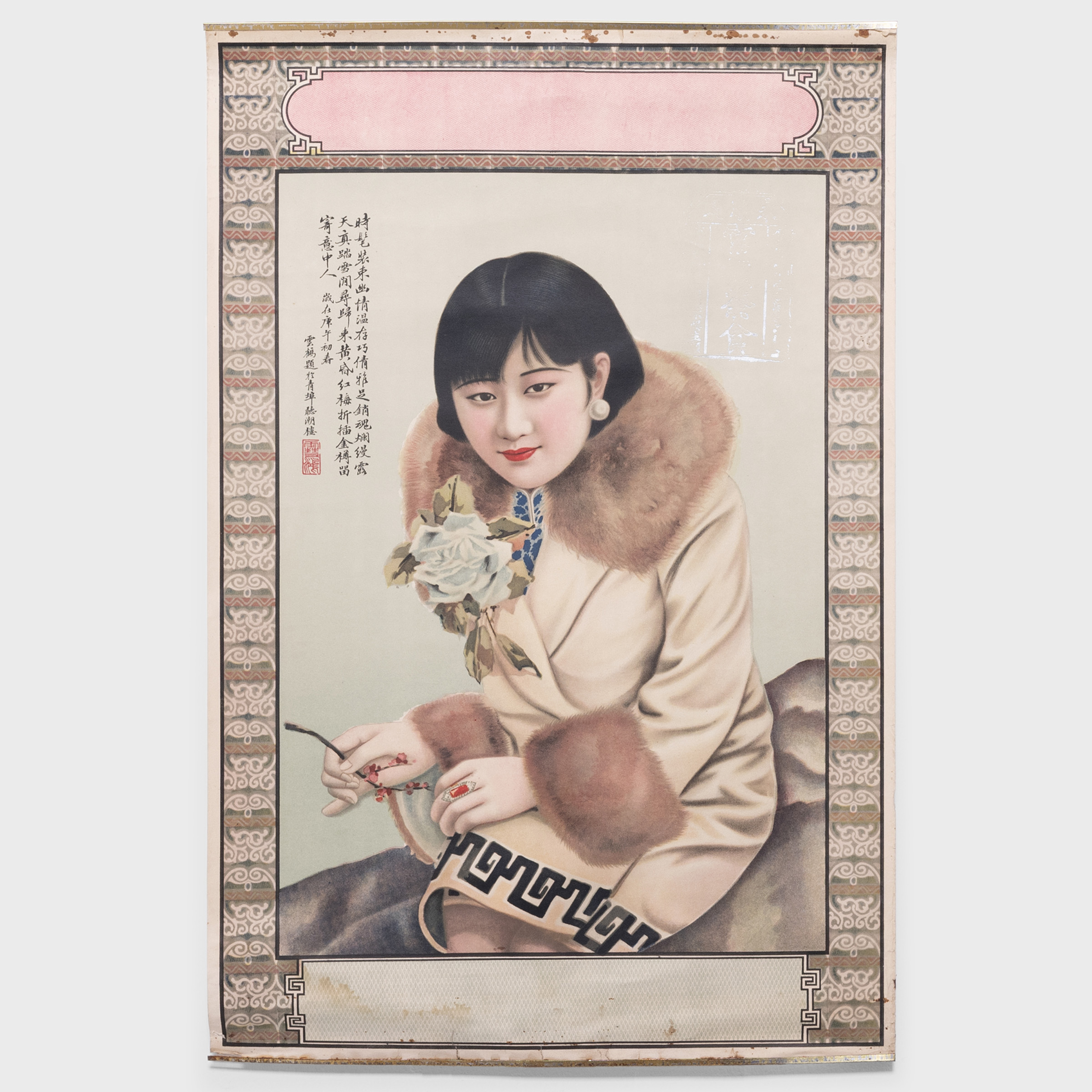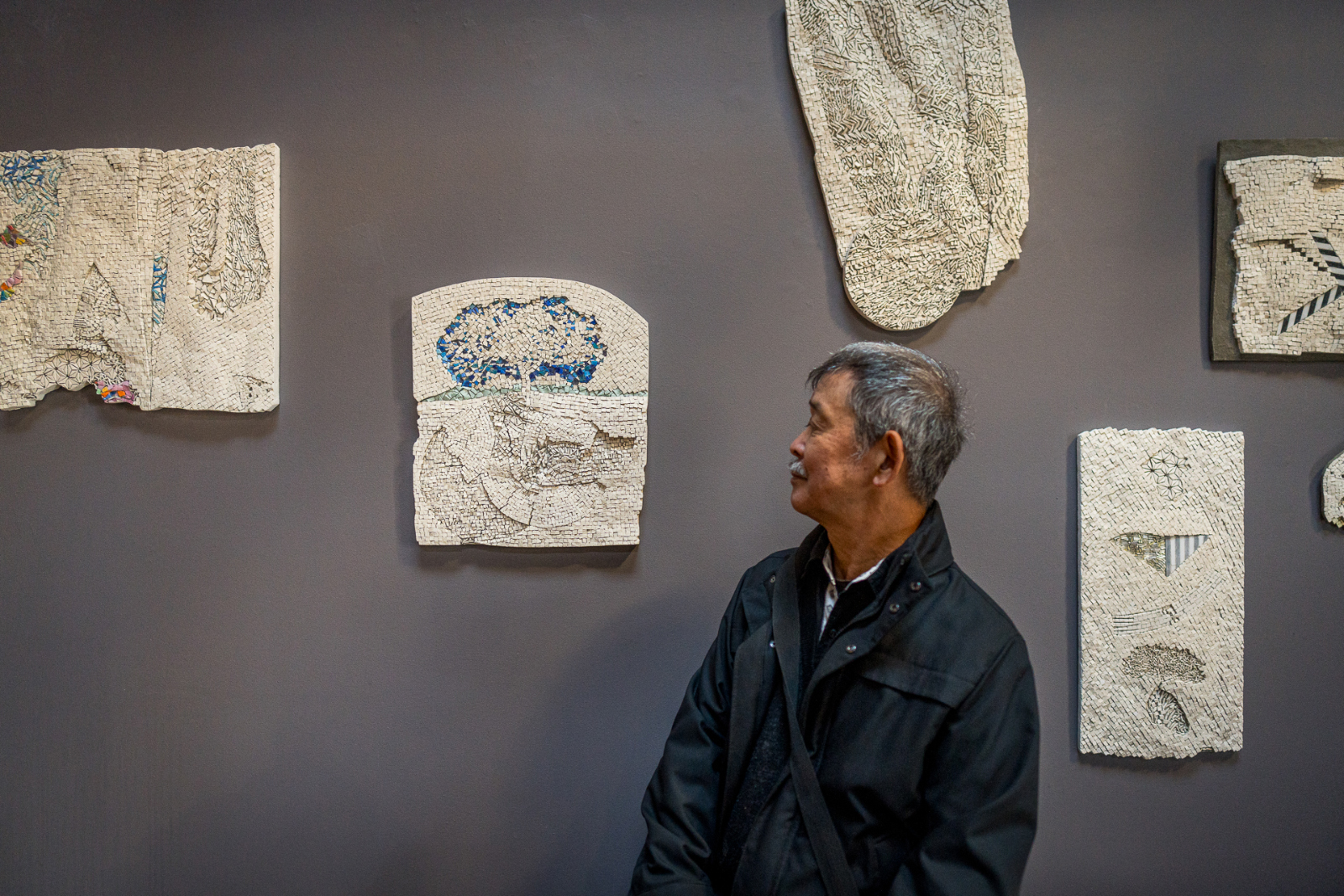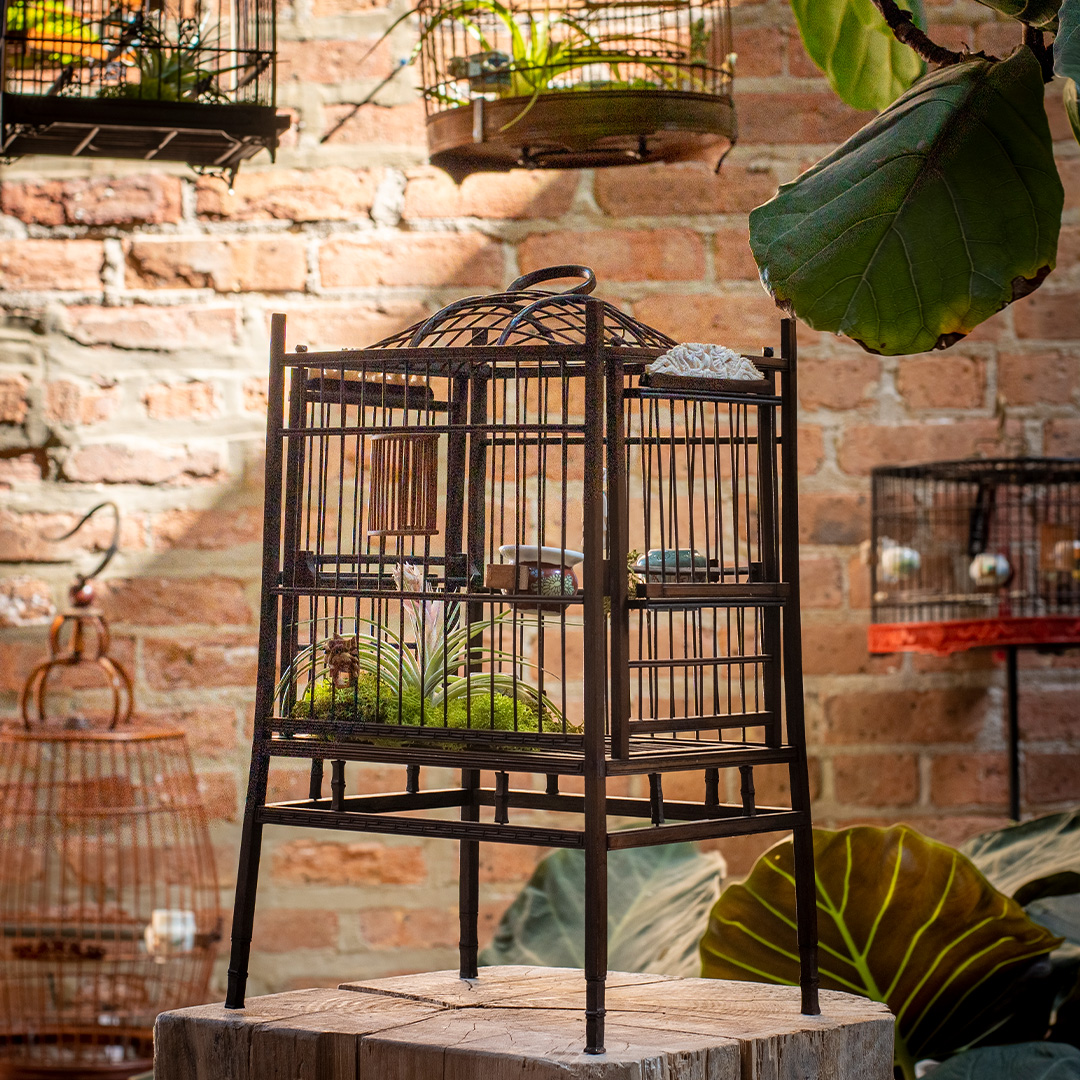
Luxe Life: The Custom Homes of Chinese Songbirds
“Songbirds brush the eaves in flight and fish dart through the waterweed, men of elegance and taste, apprehending their nature, do not weary of watching them all day long.”
– Wen Zhenheng, translated by Tony Blishen
The practice of keeping a small songbird as a pet is a longstanding tradition in China dating back to the early Qing dynasty. Much like cricket-keeping, caring for a songbird brought the joyous sounds of the outdoors into the home. With time, bird-keeping resulted in widespread social customs and inspired an entire material culture.
Appreciating Both Tea & Birds
Originally the courtly pastime of Qing-dynasty noblemen, bird-keeping as a hobby eventually made its way to the masses. By the late 19th century, birdcages were a common household item and many craftsmen specialized in the delicate work of cage-making. The practice of keeping birds was especially popular in urban centers such as Beijing and Tianjin, where songbirds in their cages could be heard all throughout the city – at the market, in the park, and inside the teahouse.

Cartier-Bresson, Henri, Peking, 1949. Source: Museum of Modern Art.
The teahouses of Old Beijing provided a place for all walks of life to gather and entertain themselves. As fixtures of the community, it was not uncommon for the teahouses to open first thing in the morning and see visitors all day long.
Many residents would start their days with a bit of exercise and fresh air, carrying with them a bird in a cage. Afterward, they would bring their feathered companion to a local teahouse to drink tea and chat with friends. They would hang their birdcages from poles overhead or place them on the table and listen to the birds sing to one another. Many pet birds were trained to chirp and tweet in more than 10 different calls, and some could even imitate the calls of large wild birds and predators.
Recognizing the delights of these songbirds, many shopkeepers would organize gatherings known as chániǎohuì (茶鸟会), parties for appreciating both tea and birds. They would send out invitations to all their patrons using fine stationery and red envelopes, inviting bird-keepers to show off their pets and bird enthusiasts to come and admire them.
The Cages
Much like snuff bottles or Japanese netsuke, birdcages provided an opportunity to display one’s wealth and fine taste. Carried around from place to place, birdcages were as much an accessory as they were a functional object. Ornate cages came in several classic forms, many intended for a specific species of songbird.
The smallest of the birdcages was known as the Silver Eyes Cage and was suitable for small ornamental birds such as the embroidered bird, the yellow-bellied finch, and the warbler. These cages have square forms with short corner legs and two horizontal bands. This square hanging cage from the PAGODA RED collection is crafted of thin bamboo rods with multiple perches, a liftable side door, and two matching porcelain waterpots.
Another classic form was the Yellowbird Cage, a wide, round cage suitable for larks, finches, goldwings, and other small eaters. The birdcage’s cylindrical form ensures the bird can be seen clearly from all sides, making it especially well-suited for hanging from a pole or branch. This round hanging cage from the PAGODA RED collection has a lacquered bamboo frame and a thick bottom ring of carved cinnabar lacquer.
When a bird-owner is traversing great distances, they may find themselves in need of a traveling case to protect their feathered friend from harm’s way. Special carrying cases made specifically for birdcages allowed owners to easily carry their pet alongside their other luggage. This elegant traveling case from the PAGODA RED collection is crafted of fine huali rosewood with intricate brass hardware – a wonderful accessory in and of itself!
The Accessories
A finely crafted birdcage calls for even finer accessories. These luxe additions to a wooden songbird cage were believed to offer protection from harm and ensure one’s bird a life of ease.
Jade Rings
Many cages were traditionally strung with a small jade ring charm. Much like solid jade bangles worn around the wrist, these small rings protected the bird from illness, misfortune, or evil intentions.
Waterpots
No cage would be complete without two petite dishes for holding water and birdseed. Mounted to the sides of the cage, these shallow dishes were made of porcelain or hardwood, or even carved from precious materials like ivory or jade. These petite cups were often decorated with the same level of expertise as fine porcelain wares, rendered in popular styles such as famille rose enamelware, cloisonné, celadon, and classic blue & white.
Perches
Every songbird cage would have been crafted with at least one perch. Also known as a sun bar, a perch provided a place to rest and kept the bird off the base of the cage, which would have become dirtied throughout the day.
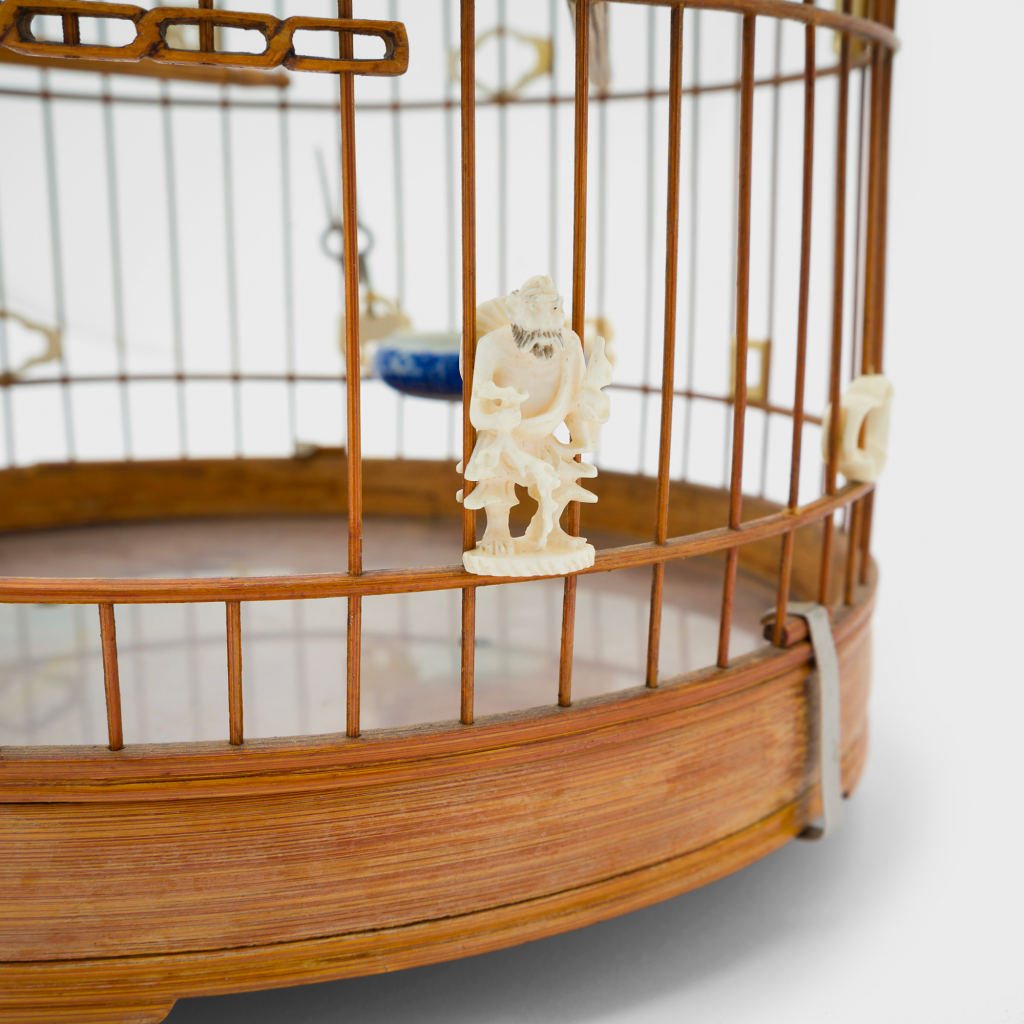
A carved bone charm sits between the bars of this round bamboo birdcage, shaped in the likeness of the mythical immortal Li Tieguai.
Charms
Designed to rest between the bars, birdcage charms provide additional protection and decorative flair. These little charms were carved from various materials to whatever form the owner fancied. Common motifs include mythical fu dogs, celestial dragons, round bi discs, bats, deities, and even tiny cricket cages – used to layer the sounds of both your pet cricket and your pet bird!
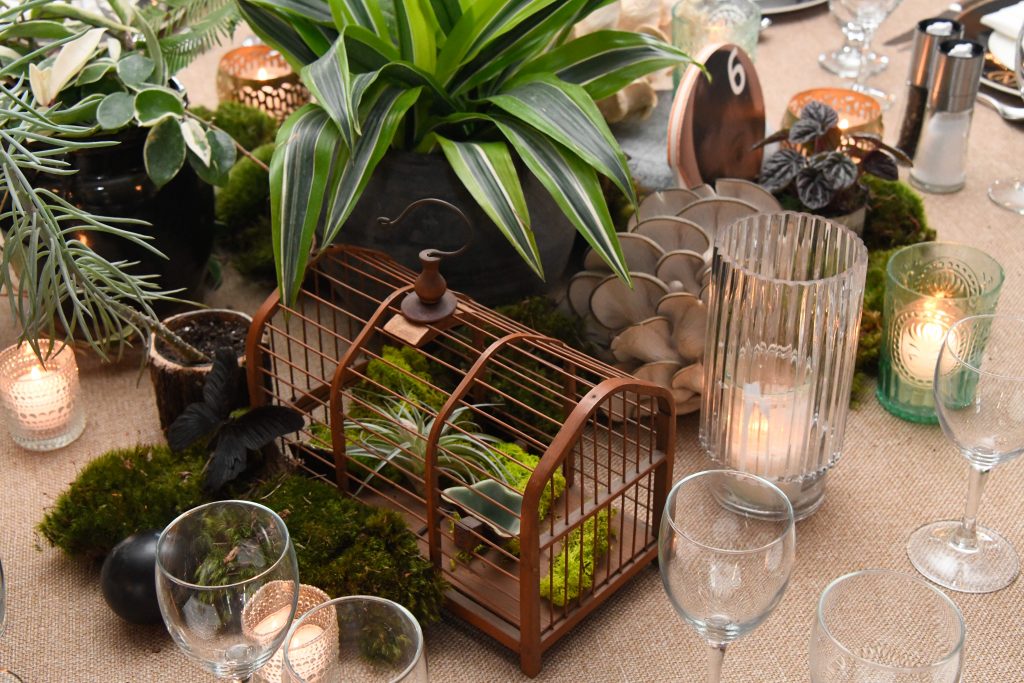
A bamboo birdcage reimagined as a tabletop centerpiece.
PAGODA RED is proud to offer a wonderful collection of antique Chinese birdcages, each one selected for its sculptural form and charming array of accessories. True collector’s items, these delicate objects recall a bygone era and spark curiosity. Today, we love these fanciful cages clustered together on a ceiling, collected on a bookshelf, to elevate air plants, as storied light fixtures, or to create magical tablescapes.

SHOP THE STORY
- Birdcage with Faux Branches
- Woven Bamboo Birdcage
- Birdcage with Burl Cup
